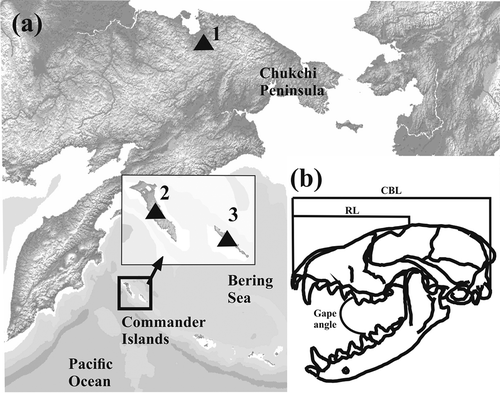Figures & data
Figure 1. (a) Map showing the location where the mainland (approximate coordinates 68°26'N, 171°39'E) specimens was collected (1), and the location of the two Commander Islands, (2) Bering Island (approximate coordinates 55°4'N, 166°4'E) and (3) Mednyi Island (approximate coordinates 54°40'N, 167°50'E); the copyright-free map was downloaded from www.maps-for-free.com and modified. (b) Lateral view of an Arctic fox cranium showing the three measurements taken in this study, CBL, RL and gape angle.

Table 1. ANOVA for CBL, RL, residuals of linear RL/CBL regression, and gape angle between populations: mainland (main), Mednyi Island (Med) and Bering Island (Ber). Significant values are in boldface.
Table 2. ANOVA for CBL, RL, residuals of linear RL/CBL regression and gape angle between males (m) and females (f) in each population: mainland (main), Mednyi Island (Med) and Bering Island (Ber). Significant values are in boldface.
